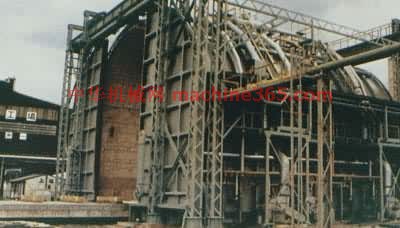1) Rossby wave
感热加热
1.
Based on the classical atmospheric wave theory,we derive the wave-like solution of the steady Rossby wave with sensible heating and topographic forcing by the normal mode method.
结果表明由于感热加热集中于近地层附近,其波动解具有与山脉波类似的波动垂直结构,波动等位相线随高度向西倾斜,波动能量向上传播。
2) Surface sensible heating
表面感热加热
3) Sea surface sensible heating
海表感热加热
4) sensible heat
感热
1.
Based on the field observation data, changes of sensible heat and latent heat on dry-farming land in semi-arid region during different development phases of crop on a typical clear day are presented in this paper.
利用野外试验观测资料,就西北地区东部半干旱雨养农田典型晴天感热、潜热在作物不同生长时段的变化特征进行初步的探讨。
2.
The exchange of sensible heat is a primary form of energy exchange between the ground and atmosphere.
运用多年全球感热通量数据进行经验正交函数(EOF)分析,得到感热异常关键区。
3.
Based on monthly data of the second version of Hamburg Ocean Atmosphere Parameters and Fluxes from Satellite data(HOAPS) from 1988 to 2002,the temporal and spatial variability of potential heat,sensible heat and sea surface temperature(SST) of South China Sea(SCS) has been analyzed by the EOF(Empirical Orthogonal Function) method.
基于第二版本HOAPS(Hamburg Ocean Atmosphere Parameters and Fluxes from Satellitedata)潜热、感热和海表温度(SST)3个参量的15 a(1988~2002年)逐月平均资料,利用经验正交方法分解分析了这3个参量在南海的时空分布。
5) Sensible heat flux
感热通量
1.
), turbulence kinetic energy and sensible heat flux are calculated and their characters are analyzed under different stability and compared with the r.
采用2000年8月在美国加州棉花地两个高度上应用超声三分量仪、快速响应温度和湿度仪进行的EBEX2000(InternationalEnergyBalanceExperiment,2000)风速三分量、温度和湿度湍流实验观测数据,计算分析了湍流宏观量(即u,T,σu/u,σv/u,σw/u和σT/T等),湍流动能和感热通量等的特征,并与其他湍流实验得到的结果进行了比较。
2.
Based on the studies of the climatic characteristics and the spatial features and temporal tendencies of the surface sensible heat flux (SSHF) on the Qinghai-Xizang Plateau, its effects on the general atmospheric circulation over the Northern Hemisphere and climatic anomaly of China have been further studied by the statistical diagnoses and the IAP2-LAGCM modeling.
在青藏高原地面感热通量的基本气候特征以及异常变化的空间结构和时间演变趋势研究的基础上 ,进一步就高原地面感热异常对北半球大气环流和中国气候异常的影响进行诊断研究 ,并利用IAP2 LAGCM对青藏高原地面感热异常的影响进行了数值试验。
3.
Based on previous research on sensible heat flux, we investigate it from different aspects using GAME/Tibet data measured during 6 June-13 September, 1998.
回顾了前人对感热通量的分析研究,详细分析了计算感热通量公式的推导过程。
6) direct thermo-sensitive
直接感热
参考词条
补充资料:金属热处理 :感应加热热处理
用感应电流使工件局部加热的表面热处理工艺。这种热处理工艺常用於表面淬火﹐也可用於局部退火或回火﹐有时也用於整体淬火和回火。20世纪30年代初﹐美国﹑苏联先后开始应用感应加热方法对零件进行表面淬火。随著工业的发展﹐感应加热热处理技术不断改进﹐应用范围也不断扩大。
基本原理 将工件放入感应器(线圈)内(图1 感应加热原理 )﹐当感应器中通入一定频率的交变电流时﹐周围即產生交变磁场。交变磁场的电磁感应作用使工件内產生封闭的感应电流──涡流。感应电流在工件截面上的分布很不均匀﹐工件表层电流密度很高﹐向内逐渐减小(图2 沿工件截面的电流密度分布
)﹐当感应器中通入一定频率的交变电流时﹐周围即產生交变磁场。交变磁场的电磁感应作用使工件内產生封闭的感应电流──涡流。感应电流在工件截面上的分布很不均匀﹐工件表层电流密度很高﹐向内逐渐减小(图2 沿工件截面的电流密度分布 )﹐这种现象称为集肤效应。工件表层高密度电流的电能转变为热能﹐使表层的温度昇高﹐即实现表面加热。电流频率越高﹐工件表层与内部的电流密度差则越大﹐加热层越薄。在加热层温度超过钢的临界点温度后迅速冷却﹐即可实现表面淬火。
)﹐这种现象称为集肤效应。工件表层高密度电流的电能转变为热能﹐使表层的温度昇高﹐即实现表面加热。电流频率越高﹐工件表层与内部的电流密度差则越大﹐加热层越薄。在加热层温度超过钢的临界点温度后迅速冷却﹐即可实现表面淬火。
分类 根据交变电流的频率高低﹐可将感应加热热处理分为超高频﹑高频﹑超音频﹑中频﹑工频 5类。①超高频感应加热热处理所用的电流频率高达27兆赫﹐加热层极薄﹐仅约0.15毫米﹐可用於圆盘锯等形状复杂工件的薄层表面淬火。②高频感应加热热处理所用的电流频率通常为200~300千赫﹐加热层深度为0.5~2毫米﹐可用於齿轮﹑汽缸套﹑凸轮﹑轴等零件的表面淬火。③超音频感应加热热处理所用的电流频率一般为20~30千赫﹐用超音频感应电流对小模数齿轮加热﹐加热层大致沿齿廓分布﹐粹火后使用性能较好。④中频感应加热热处理所用的电流频率一般为2.5~10千赫﹐加热层深度为2~8毫米﹐多用於大模数齿轮﹑直径较大的轴类和冷轧辊等工件的表面淬火。⑤工频感应加热热处理所用的电流频率为50~60赫﹐加热层深度为10~15毫米﹐可用於大型工件的表面淬火。(见彩图 差温炉淬火 ﹑ 600毫米直径冷轧辊工频感应加热淬火
﹑ 600毫米直径冷轧辊工频感应加热淬火 ﹑ 大型铸钢件的热处理炉
﹑ 大型铸钢件的热处理炉 ﹑ 真空淬火炉
﹑ 真空淬火炉 )
)
基本原理 将工件放入感应器(线圈)内(图1 感应加热原理
 )﹐当感应器中通入一定频率的交变电流时﹐周围即產生交变磁场。交变磁场的电磁感应作用使工件内產生封闭的感应电流──涡流。感应电流在工件截面上的分布很不均匀﹐工件表层电流密度很高﹐向内逐渐减小(图2 沿工件截面的电流密度分布
)﹐当感应器中通入一定频率的交变电流时﹐周围即產生交变磁场。交变磁场的电磁感应作用使工件内產生封闭的感应电流──涡流。感应电流在工件截面上的分布很不均匀﹐工件表层电流密度很高﹐向内逐渐减小(图2 沿工件截面的电流密度分布 )﹐这种现象称为集肤效应。工件表层高密度电流的电能转变为热能﹐使表层的温度昇高﹐即实现表面加热。电流频率越高﹐工件表层与内部的电流密度差则越大﹐加热层越薄。在加热层温度超过钢的临界点温度后迅速冷却﹐即可实现表面淬火。
)﹐这种现象称为集肤效应。工件表层高密度电流的电能转变为热能﹐使表层的温度昇高﹐即实现表面加热。电流频率越高﹐工件表层与内部的电流密度差则越大﹐加热层越薄。在加热层温度超过钢的临界点温度后迅速冷却﹐即可实现表面淬火。 分类 根据交变电流的频率高低﹐可将感应加热热处理分为超高频﹑高频﹑超音频﹑中频﹑工频 5类。①超高频感应加热热处理所用的电流频率高达27兆赫﹐加热层极薄﹐仅约0.15毫米﹐可用於圆盘锯等形状复杂工件的薄层表面淬火。②高频感应加热热处理所用的电流频率通常为200~300千赫﹐加热层深度为0.5~2毫米﹐可用於齿轮﹑汽缸套﹑凸轮﹑轴等零件的表面淬火。③超音频感应加热热处理所用的电流频率一般为20~30千赫﹐用超音频感应电流对小模数齿轮加热﹐加热层大致沿齿廓分布﹐粹火后使用性能较好。④中频感应加热热处理所用的电流频率一般为2.5~10千赫﹐加热层深度为2~8毫米﹐多用於大模数齿轮﹑直径较大的轴类和冷轧辊等工件的表面淬火。⑤工频感应加热热处理所用的电流频率为50~60赫﹐加热层深度为10~15毫米﹐可用於大型工件的表面淬火。(见彩图 差温炉淬火
 ﹑ 600毫米直径冷轧辊工频感应加热淬火
﹑ 600毫米直径冷轧辊工频感应加热淬火 ﹑ 大型铸钢件的热处理炉
﹑ 大型铸钢件的热处理炉 ﹑ 真空淬火炉
﹑ 真空淬火炉 )
) 说明:补充资料仅用于学习参考,请勿用于其它任何用途。